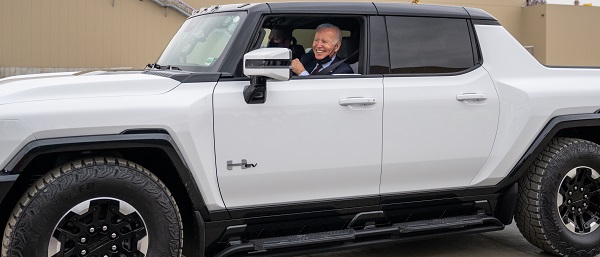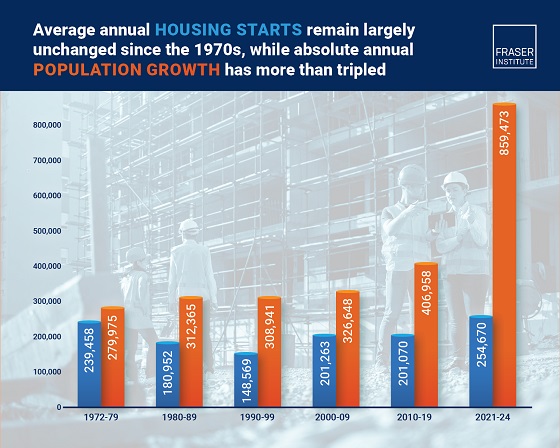Automotive
‘A Lot Of Government Coercion’: Study Slams ‘Forced Transition’ To EVs Consumers Don’t Seem To Want


From the Daily Caller News Foundation
By Owen Klinsky
The push for electric vehicle (EV) adoption is largely premised on misleading claims, and could bring enormous costs for U.S. consumers and the economy, a new meta-study shared exclusively with the Daily Caller News Foundation found.
Federal regulators and multinational corporations have attempted to push EVs on the American public in recent years, with the Biden-Harris administration introducing strict tailpipe emissions standards, and major automakers implementing lofty electric production targets. However, widespread EV adoption may not be as feasible as lawmakers and auto executives once claimed, with a new meta-analysis from the Institute for Energy Research (IER) noting EVs can have a variety of drawbacks for consumers when compared to their gas-powered counterparts, including elevated upfront costs, lower resale values, limited driving range and a lack of charging infrastructure.
“We argue the EV transition is going to take a lot of government coercion to make happen,” Kenny Stein, vice president of policy at IER and the study’s lead author, told the DCNF. “It is a very difficult process, and it is not a very desirable process to force.”
When Government Chooses Your Car Study; Institute for Energy Research (IER)
Much of the reason a U.S. EV transition will not occur without government force, according to the study, is cost. The price of an average EV in the first quarter of 2024 was $53,048, compared to just $35,722 for conventional vehicles, according to car shopping guide Edmunds, meaning many EVs continue to be less affordable than their gas-powered counterparts even with the U.S. Treasury Department’s $7,500 tax credit.
The IER study also cites elevated depreciation as a constraint on EV adoption, noting that the average five-year depreciation for an electric car is $43,515 compared to $27,883 for a gas-powered vehicle, according to vehicle valuation company Kelley Blue Book. The rapid depreciation is largely driven by battery replacement costs, which range from $7,000 to as much as $30,000.
In addition to sheer cost, the study found “range anxiety” — the concern among drivers that they will run out of charge before reaching their destination or a charging station — is a major source of consumer reluctance to purchase EVs. While “range anxiety” can be reduced by increasing mileage, expanding an EV’s range requires a larger battery, which in turn drives up vehicle cost and creates a difficult tradeoff for consumers.
A lack of charging infrastructure also contributes to range concerns, and has proven difficult to fix despite ample government funding, the study found. For example, the bipartisan infrastructure bill of 2021 allotted $7.5 billion to subsidize thousands of new EV charging stations, but only seven stations in four states had been built as of April.
The combination of range issues and high costs has helped drive a slackening in EV demand, with EV sales growing 50% in the first half of 2023 and 31% in the first half of 2024, less than the 71% increase in the first half of 2022. Moreover, a June poll from The Associated Press-NORC Center for Public Affairs Research and the University of Chicago’s Energy Policy Institute found 46% of respondents were “unlikely” or “very unlikely” to purchase an EV, while just 21% were “very” or “extremely” likely to make the change.
If thousands of new charging stations are built and demand rises due to the alleviation of range concerns, the transition would create a variety of new infrastructural challenges, namely that it would reduce the reliability of an already constrained U.S. power grid.
“Up until two years ago or so, electricity demand in the United States was flat so nobody worried about running out of electricity. But with the data center boom and AI [artificial intelligence], there’s been a sudden spike in demand for electricity, and demand is expected to continue growing,” Stein told the DCNF. “Now you’re suddenly talking about not having enough electricity to supply everyday use at the same time we are trying to force pre-existing transportation systems to run on electricity. When you combine that EVs are more expensive and less flexible with the possibility we may be running out of electricity to keep homes cool and to operate industrial facilities, the logic of pursuing [the EV transition] gets even worse.”
Electricity demand has grown by 1.3% annually for the past three years — more than double the average growth rate from 2010 to 2019, according to the Federal Reserve Bank of Kansas City. The surge has been driven largely by a boom in artificial intelligence and data centers, with commercial electricity accounting for 60% of growth in total U.S. power demand between 2021 and 2023.
On the supply side, the Biden-Harris Environmental Protection Agency (EPA) has pushed to reshape the power grid by effectively requiring America’s existing coal plants will have to use carbon capture and storage (CCS) technology to control 90% of their carbon emissions by 2032 if they want to stay running past 2039, and certain new natural gas plants will have to cut their emissions by 90% by 2032. The EPA rule “leaves coal-heavy regions, like the one covered by the Midcontinent Independent System Operator, vulnerable to reliability problems in the near future,” Isaac Orr, a policy fellow for the Center of the American Experiment who specializes in grid analysis, previously told the DCNF.
Grid reliability is already wavering, with hundreds of millions of Americans at risk of experiencing power shortages this winter if weather conditions are harsh, according to power grid watchdog the North American Electric Reliability Corporation (NERC).
The IER study also identifies a set of “myths fueling electric vehicle policy,” including that EVs are necessarily better for the environment.
“One of the biggest sources of emissions from vehicles is tire wear, because tires are made primarily from oil, and as your tires roll along the ground, they degrade and release particulates into the air,” Stein told the DCNF. “Electric vehicles are much heavier than gas-powered cars due to their batteries, which requires them to have heavier tires that wear faster, so EVs actually have much higher particulate emissions than comparable internal combustion engine vehicles.”
A 2020 study from environmental engineering consultancy Emissions Analytics found particulate wear emissions were 1,000 times worse than exhaust emissions, with later research conducted by the consulting firm finding a Tesla Model Y produced 26% more tire emissions than a comparable hybrid vehicle.
Additionally, the IER study notes EVs require six times the mineral inputs of conventional cars, which in turn calls for emissions-intensive mining processes that produce toxic waste.
“For average Americans, the tradeoff calculation obviously is not working,” the study’s authors wrote. “This is not due to misinformation; indeed… there is plenty of pro-EV misinformation. It is simply that…there are negative tradeoffs to EVs. In designing policy, these negative factors must be considered rather than simply ignored.”
2025 Federal Election
Trudeau and Carney Have Blown $43B on EVs

 David Krayden
David Krayden
General Motors laid off 500 workers at his Electric Vehicle (EV) plant in Ingersoll, ON.
It had nothing to do with the tariffs.
It had everything to do with the plummeting fascination that Canadians have for EVs. They are selling like used Edsels in the late 1950s. In a useless attempt to create a demand for these “green” vehicles (which aren’t actually green at all because the production of electricity does not result from magic) the governments of former Prime Minister Justin Trudeau and Ontario Premier Doug Ford wasted $42 billions of your tax money. And it was all to bolster an ideology not a demand for cars. There is no demand for these vehicles.
“You just lost 500 jobs. They’ve nuked those jobs. They’re not there anymore.”
-Dan McTeague

Ford, who saw this coming when he called an early provincial election that he knew he probably was going to lose if he waited for the anticipated vote, was actually honest to reporters when he admitted the layoffs had nothing to do with the dreaded Trump tariff but everything to do with public taste.
“What I understand from the president of General Motors that I spoke to, it’s going to be about 500 employees. Has nothing to do with the tariffs. He said, the volume is not there. People are not purchasing like they thought they would. So, they have thousands of vehicles sitting there. We make sure we support the workers and make sure that we get the government, especially Canada Post, to pick up some of these vehicles, because that’s what it’s geared for you.”

So, Ford expects Canada Post, another government agency on its last legs, to come to the rescue and pick up all these excess EVs? Sounds like it. The irony is that Ford came into office largely because the previous Liberal government had gone hog wild with its green energy program and hydro rates were among the highest in North America. Ford used to say that a industrialized province like Ontario can’t possibly prosper or even subsist on the energy provided by windmills and solar panels. He was right then but over the years he became firmly ensconced in the pocket of Trudeau and the Liberals, just as he is today with Mark Carney.

I spoke to my old friend Dan McTeague on Saturday about this mess. McTeague is a former Liberal MP from the GTA who is the president of Canadians for Affordable Energy today and well known for predicting gas prices across Canada as the @ gaspricewizard on X. As an MP, he always put principal above expediency, and he is no different today. McTeague is anxious for a Conservative Party of Canada (CPC) victory in this federal election and he is actively campaigning for a CPC nominee.

McTeague was not surprised over the dismal outlook for EVs.
“This is about Pierre Poilievre saying your policies are garbage. They’ve hurt Canadians. They’ve undermined the financial feasibility and sustainability of the federal government and the provincial government, and we’re going to get rid of them, just like we’re going to get rid of the CBC.”
-Dan McTeague
“Well, on the 22nd of March after having gone to the Ingersoll plant. I just tweeted a little while ago. I actually went there, filmed what was there in inventory. There were thousands of these vehicles just sitting there doing nothing. Obviously, Doug Ford didn’t get it on the 22nd of March. I said it says a lot about why the Ford nation is giddy about supporting Carney, he’s committed billions in world EV and battery manufacturing like this one in Ingersoll, where the provincial Feds kicked in over half a billion for bright drops. Was supposed to sell 100,000 units. Only sold 2100 actually, it got wrong. It was 2500 they might have probably given that a few away there. But look, this is anticipating what was there. It’s pretty obvious. I mean, I don’t just predict gas prices. Pretty good idea policies, EV mandates, the entire nets,” McTeague said.
McTeague explained that the “EV mandates are toast,” not just because President Donald Trump eliminated them but because they simply never had traction with consumers. He noted that Carney is playing games with the consumer carbon tax – because he hasn’t eliminated it but merely reduced it temporarily to zero – and has continued to keep emissions caps in place.
“Why are they doubling down on forcing us to have California-style appliances, which are extraordinarily costly to consumers. There are thousands of these things that are coming up. GFANZ, the Glasgow Financial Alliance for Net Zero that Mark Carney put forward, is now subject to antitrust review in the United States. This guy could be charged and billions of dollars taken away from the GFANZ organization,” McTeague said, adding that “anybody who hopped on the bandwagon a few years ago on net zero is now looking pretty damn foolish, and it’s amazing to see so many stunned Canadians falling in for this.”
“You just lost 500 jobs. They’ve nuked those jobs. They’re not there anymore.”

The former Liberal MP said the EV program is just one example of a failed economic record from the Trudeau-Carney regime. “However you slice it, the Liberals have had 10 years of failed policies. Net Zero has laid an egg. It’s not doing anything. And what they’re going to try to do is use a lot more public money and hopefully put enough wool over everyone’s eyes, so that we continue to go down this road of more recklessness as a result of what we’ve seen on EVs.
“Anybody who hopped on the bandwagon a few years ago on net zero is now looking pretty damn foolish, and it’s amazing to see so many stunned Canadians falling in for this.”
McTeague also wondered how the Ontario premier has moved from a commonsense politician on green energy to a cheerleader for Trudeau’s environmental authoritarianism. “For Doug Ford to have signed onto this. I mean, Shame on him, but it probably explains why he doesn’t want to support Pierre Poilievre.”
Said McTeague: “This is about Pierre Poilievre saying your policies are garbage. They’ve hurt Canadians. They’ve undermined the financial feasibility and sustainability of the federal government and the provincial government, and we’re going to get rid of them, just like we’re going to get rid of the CBC.”
“And so, for those reasons, you’re going to see why people are not supporting Pierre Poilievre, because they know, you know, they know which side of the bread is going to get buttered and for guys like Doug Ford, Bad mistake, back the wrong horse, and now we’re holding the bag. That’s why he called the election early.”
McTeague said the federal election is a watershed moment for people to decide what kind of future they want: prosperity or poverty. “If Canadians can’t get their head out of the sand and realize that they’re being duped that they can’t afford, you know, the saddling of the debts that these things are incurring for generations to come, and they think that somehow crapping on pipelines or putting emission caps that won’t allow us to make any more oil or gas to send these pipelines that they now suddenly have discovered are important … If we don’t wake up real soon, next two weeks, I can say confidently the next four years is basically cutting people.”
The energy expert predicted that the worst if yet to come if Carney wins a mandate to govern from the voters. “Nothing has changed, if anything, Mr. Carney and his company, as we well know, has lied on so many fronts. And here’s the big one that I’m going to say it here now, because I’ve said it many places before, but to be absolutely clear, you’re going to get a carbon tax, and that 20 cents you think you’re getting off. It’s going to be 40 cents by 2030, likely by the end of another government, “should they form a majority government.”
McTeague cautioned against Canadians becoming deluded and declaring, “Oh, we’re not worried about the future; we just don’t like Donald Trump, and we think Pierre Poilievre is like him.” Give your head a shake — because you know what, I’m going to spend a lot of time over the next few years, pointing back to the stupidity and frivolity of people. And make no mistake, David, these people know what they’re doing. They’re just trying to be cool and friendly because they made mistakes in 2015, 2019 and again in 2021 and they want to somehow think that they can justify bad decisions. What’s coming at the expense of the country? Coming at the expense of our economic sustainability? It’s likely coming at the expense of what concerns me even more so: the future of the federation of this country.”
“I’ve said it many places before, but to be absolutely clear, you’re going to get a carbon tax, and that 20 cents you think you’re getting off. It’s going to be 40 cents by 2030.”
Dan and I also discussed how he has discovered that much of the polling being conducted during this campaign is over-sampling people over 60, which comprise at least 50 percent of the respondents included in the surveys. This bodes well for Poilievre and the Conservatives.
Tomorrow I will be examining how the Consevatives are appealing to working class Canadians, labor union leaders and blue collar workers. Seeking and winning the “hard hat vote” worked for President Richard Nixon in 1972 and President Ronald Reagan in 1984. It can work for Poilevre too in 2025 — and somehow I think he realizes that.
WATCH: The Ugly Truth About Carney: Trudeau Subsidies Fail
CHECK OUT OUR KR NEWS INVESTIGATIVE SERIES ON MARK CARNEY

Rich Banker Man Mark Carney Caught by CBC & CTV Dodging Taxes

Liberal MP Encouraged the Abduction of Conservative Rival for Chinese Bounty

KR NEWSLETTER: Mark Carney to “Fold” “After the vote.” Carney’s Wife’s Eurasia Group Boss Spills the Beans on the Liberals’ “Elbows Up” Master Plan

GFANZ, Mark Carney’s Climate Cabal That Won’t Leave Us Alone

Mark Carney’s is China’s Man

KRN NEWSLETTER: Mark Carney Deep Dive + Disastrous Liberal Leadership Debates
Automotive
Tesla Vandals Keep Running Into The Same Problem … Cameras


From the Daily Caller News Foundation
By Hudson Crozier
People damaging Teslas in anger toward their owners and Elon Musk aren’t picking up on the fact that the vehicles have multiple cameras capable of catching them in the act.
At least nine perpetrators have been caught on video keying, writing graffiti or otherwise defacing Tesla vehicles in parking lots across the U.S. in the month of March alone. Most have led to an arrest or warrant based partly on the footage, which Tesla’s “Sentry Mode” automatically films from the side of the unattended vehicle when it detects human activity nearby.
“Smile, you’re on camera,” Tesla warned in a March 20 X post about its Sentry Mode feature. Musk’s company has been working to upgrade Sentry Mode so that the vehicles will soon blast music at full volume when vandals attack it. The camera system, however, has not stopped an increasing number of vandals from singling out Tesla owners, usually in protest of Musk’s work in the Trump administration for the Department of Government Efficiency (DOGE).
One incident happened on March 29, the same day leftists coordinated protests around the country for a “Global Day of Action” against Musk. That Saturday also saw alleged instances of violence at protests. The demonstrations stemmed from an online call to action by groups such as the Disruption Project, which encourages activists to foment “uprisings,” find a “target’s” home address and other confrontational tactics.
Tesla’s press team did not respond to a request for comment.
One man allegedly caught on camera keying a Tesla SUV on March 24 apologized to the owner who confronted him in a parking lot in Pennsylvania, police and media reports said. The man faces charges of criminal mischief, harassment and disorderly conduct for allegedly carving a swastika onto the vehicle.
“I have nothing against your car, and I have nothing against you,” the suspect said while the owner filmed him in the parking lot. “Obviously, I have something against Elon Musk.” The man called his own behavior “misguided.”
The defendant’s lawyer told Fox News his “client is a proud father, long-time resident, and is currently undergoing cancer treatment” and that he would not comment publicly “pending the outcome of the case.”
One of the most aggressive acts caught by Sentry Mode was in the case of a man who drove an ATV-style vehicle into a Tesla on March 25. Texas police identified the man as Demarqeyun Marquize Cox, arrested him and said he allegedly gave two other nearby Teslas the same treatment while also writing “Elon” on them. The public defender office representing Cox did not respond to a voicemail from the Daily Caller News Foundation.
Tesla cameras also caught three other people in Florida, Texas and Arizona keying and smearing bubble gum on the vehicles in March. The three suspects named by police do not have attorneys listed in county records available for contact.
Many of the vandalism cases since Trump’s return have reportedly caused thousands of dollars in damage for individual owners. For example, the bubble gum incident in Florida brought $2,623.66 in costs, while another keying incident in Minnesota brought $3,200.
Some reported attacks on Tesla vehicles and chargers have gotten the attention of federal law enforcement, including cases of alleged firebombing or shooting.
Two other suspected vandals in New York, one in Minnesota and one in Mississippi have reportedly avoided arrest for now — with one owner declining to press charges — but were all seen on the Teslas’ cameras scratching up the vehicles. Police identified the Mississippi suspect as an illegal migrant from Cuba.
One Tesla owner in North Dakota ridiculed a man who allegedly carved the letter “F” into his Cybertruck in a Costco parking lot — as seen on the Cybertruck’s camera. The defendant faces charges of criminal mischief, and county records say he is representing himself in court.
“I can’t believe this guy is potentially ruining his life to follow a political ideology,” the owner told WDAY News.
“If you’re going to vandalize these vehicles, you’re going to get caught,” the owner said.
-

 illegal immigration2 days ago
illegal immigration2 days agoDespite court rulings, the Trump Administration shows no interest in helping Abrego Garcia return to the U.S.
-

 2025 Federal Election2 days ago
2025 Federal Election2 days agoEuthanasia is out of control in Canada, but nobody is talking about it on the campaign trail
-

 2025 Federal Election2 days ago
2025 Federal Election2 days agoConservative MP Leslyn Lewis warns Canadian voters of Liberal plan to penalize religious charities
-

 2025 Federal Election2 days ago
2025 Federal Election2 days agoHousing starts unchanged since 1970s, while Canadian population growth has more than tripled
-

 Education2 days ago
Education2 days agoSchools should focus on falling math and reading grades—not environmental activism
-

 2025 Federal Election16 hours ago
2025 Federal Election16 hours agoRCMP Whistleblowers Accuse Members of Mark Carney’s Inner Circle of Security Breaches and Surveillance
-

 Autism1 day ago
Autism1 day agoAutism Rates Reach Unprecedented Highs: 1 in 12 Boys at Age 4 in California, 1 in 31 Nationally
-

 Bjorn Lomborg1 day ago
Bjorn Lomborg1 day agoGlobal Warming Policies Hurt the Poor






